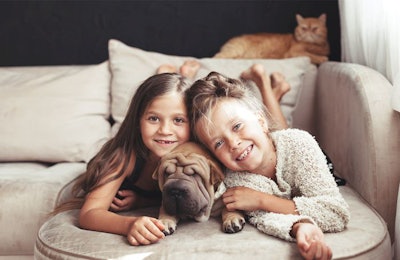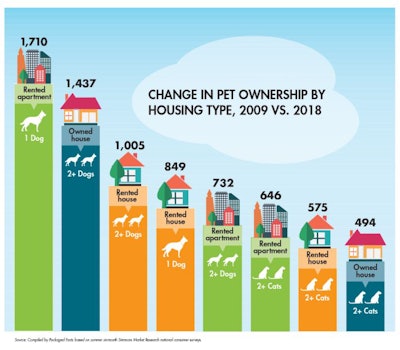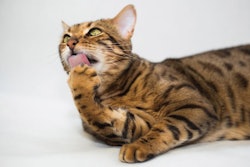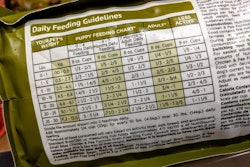
Owning a house and a dog or a cat is falling in prevalence — at least relatively speaking, and strictly meaning one dog or one cat.
Most majority trends still hold in pet ownership
Pet ownership does remain closely tied to home ownership, as shown by Simmons national consumer survey data. As of 2018, 57 percent of U.S. adults, 67 percent of dog owners and 64 percent of cat owners live in owned houses. Those figures, however, are down from 60 percent of U.S. adults, 74 percent of dog owners and 68 percent of cat owners a decade ago in 2009 (see Figure 1).

Figure 1: Pet ownership is correlated with home ownership, but that is changing as more renters own pets. (Vitalex I shutterstock.com)
Along these same lines, it remains true that the majority of dog-owning households continue to have only one dog: 56 percent as of 2018, albeit slipping down from 58 percent in 2009. As of 2018, there were 26.6 million one-dog households compared with 20.6 million households with two or more dogs.
Among cat lovers, however, this slippage becomes a reversal. Only 45 percent of cat-owning households kept only one cat in 2018, down from a slim majority of 51 percent in 2019. As of 2018, there were fewer one-cat households (13.3 million) than households with two or more cats (16.2 million).
Connections between renters and pet ownership see increased numbers
In contrast to the decline in house-owing, one-cat households, both renting and multiple-pet ownership are on the rise among the cat crowd. Most between 2009 and 2018 has been the rise in renters owning two or more cats — by 646,000 among those renting apartments and by another 575,000 among those renting houses.
Among dog lovers, renting and multiple-dog ownership rose even more dramatically. Between 2019 and 2018, the number of households owning one dog rose by 1.7 million among apartment renters and by another 849,000 among house renters. Over this time period, the number of households owning two or more dogs rose most steeply among house owners, at 1.4 million — but even more so, in combination, among house renters (1.0 million) or apartment renters (732,000).
No surprises given larger economic trends
The decline in detached home ownership rates among dog or cat owners comes as no surprise, given macroeconomic trends in U.S. housing prices (and their affordability), and directly ties in to the smaller dog trend. According to Federal Reserve Bank of St. Louis, data highlighted by the American Veterinary Medical Association (AVMA)’s Matt Salois at the VMX 2019 veterinary conference, the median sale price for houses in the U.S. jumped by 11 percent over the previous-year period to US$248,800 in third-quarter 2012 with the fading of the Great Recession. As of third-quarter 2018, the median sale price jumped by another 31 percent over that level to US$325,200.
The rise in multiple pet ownership, however, rests entirely on dogs and cats — and the growing cultural recognition of the mental and physical health benefits of making them members of the family.



















